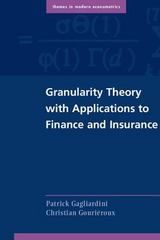0. What is Shang's profit maximizing - loss minimizing price, i.e., what is the price Shang's should charge? a. $800 b. $900 c. $1,000 d. $1, 100 . What is Average Total Cost at an output level of 2? a. $375 b. $700 c. $250 d. $335 What is the company's per unit profit at the profit maximizing output level? a. $470 b. $575 C. $666.67 d. $725 at is the company's total economic profit equal to at the profit maximizing output level? a. $2,350 b. $4,000 c. $1,650 d. $2,300 What will happen to Shang's economic profit over time? a. new firms will enter and will compete away Shang's profit. b. Shang's will have the ability to maintain profit over time due to the firm's monopoly status. c. Shang's may or may not be able to earn economic profit over time. d. Shang's economic profit is likely to turn into an economic loss over time.Rent seeking: a. occurs when the seller charges different prices for the product it sells b. occurs when the seller charges the highest price each consumer would be willing to pay for the product c. occurs when the seller charges a uniform price per unit for one specific quantity, a lower price for an additional quantity, etc. d. is when the seller pursues activity directed toward obtaining and/or maintaining monopoly status in an attempt to earn monopoly profit. Collusive tendencies exist: a. in an oligopoly market structure only b. in both monopolistic competition and oligopoly market structures c. only in the case of a monopoly market structure d. exist in all market structures A perfectly competitive firm possesses market power, while a monopolist possesses market power. a. a high degree of; no b. no; a high degree of c. no; no d. a high degree of; a high degree of If we compare a perfectly competitive firm and a single-price monopolist, then: a. the competitive firm will produce a greater output and charge a lower price than the monopolist will b. the competitive firm will produce a greater output and charge the same price as the monopolist will c. the competitive firm will produce a greater output and charge a higher price than the monopolist will d. the competitive firm will produce a smaller output and charge a higher price than the monopolist will 2. If we compare a perfectly competitive firm and a single-price monopolist, then: a. the competitive firm will attain resource allocation efficiency but the monopolist will not b. the competitive firm will attain resource allocationefficiency but the monopolist may or may not depending upon the demand for its product c. the competitive firm will not attain resource allocationefficiency but the monopolist will d. both the competitive firm and the monopolist will attain resource allocationefficiency 0.1&permmsgid=msg-f: 1685886767735854397&th=17657915426d553d&view=att&disp=safe&realattid=f_kilusm3u0e.com/mail/u/1/#inbox/FMfcgxwKjnfLZXVLzjkmhBwrFkMfdqrT? projector=1&messagePartld=0.1 36. The situation of the firm will prompt the market, the market supply curve, pushing the market price a. firms to exist, decreasing, up b. new firms to enter, increasing, down c. new firms to enter, increasing, up d. firms to exist, decreasing, down Answer Questions #37 - # based on Table B below. Quantity Price Total Marginal Marginal Average Economic Total Cost Revenue Cost Total Q P Revenue Profit TR TC MR MC Cost ATC 1 1,200 1,200 500 $1,200 $500 $500 $700 2 1, 100 2,200 750 $1,000 $250 $375 $1,450 3 1,000 1,000 4 900 1,300 5 800 1,650 6 700 2,500 The data presented in the table is for Shang's Crystal Rings. Shang's has monopoly status in the production of crystal rings. 37. What is Marginal Revenue equal to at an output level of 3? a. $800 b. $1,000 C. $2,000 d. $100 38. What is Marginal Cost equal to at an output level of 6? a. $850 b. $416.67 C. $450 d. $700 39. What is Shana's profit maximizing - loss minimizing output level. i.e.. how much should Shana's









